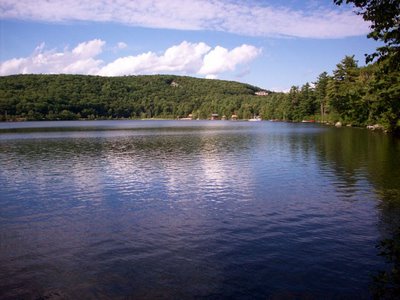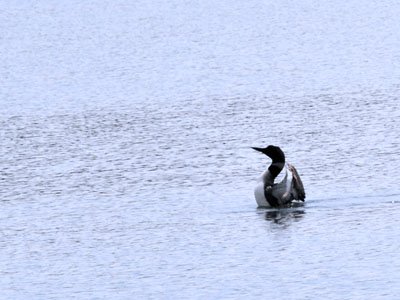August in New Hampshire – Common Loons on Dublin Lake and a Baltimore Oriole


During a week visiting some of our family in Dublin, New Hampshire, on the slopes of Mount Monadnock, another highlight for me was seeing two Common Loons on Dublin Lake – a small, picturesque lake surrounded by trees. Although we see Common Loons here in Georgia during the winter months or in migration, especially along the coast, it was a different experience to watch them in their summer home and nesting territory, and in such a characteristic setting. Also, I was able to watch them longer and at closer range, coming to know them much better.
Despite their name, they are far from common. Although worldwide their populations are considered secure, they are listed as a threatened species in New Hampshire, and as endangered in Vermont, and concern about declining populations in some areas has led to extensive efforts to protect their habitat. Maybe because of their association with clear, northern lakes surrounded by forest, and because of their melancholy, yodeling call, Common Loons have a certain mystique and are often seen as a symbol of wild places – that’s how I think of them.
With their black heads, white breasts, black and white checkered backs, and distinctive silhouettes, riding low in the water with long, pointed black bills turned upward, they often appeared alone, and looked as if they had the lake almost to themselves. We saw them – usually one at a time – several times, and always they appeared unexpectedly – suddenly there, where a moment before there was nothing but the glassy, empty surface of the lake. One would float for a moment or two, or maybe flap its wings and rise part-way out of the water, then it would dive and disappear again, sometimes for so long we gave up waiting for it and walked on.
I had hoped also to hear the Loons’ yodeling call, but even though we went to the lake several times to listen, including early in the morning and shortly after sundown, we never heard them – though we did meet two fishermen who said they had been calling about an hour before we arrived one evening so I guess we just missed it. Still – it was fun to watch them here.
We also saw several Common Mergansers and one Great Blue Heron on Dublin Lake, and at least two Common Ravens. It’s a pretty quiet time of year, but many Red-eyed Vireos still were singing, and I also heard or saw several White-breasted Nuthatches, Black-capped Chickadees, Tufted Titmice, two Hairy Woodpeckers, one Eastern Wood Pewee, Gray Catbirds, Goldfinches, one Ruby-throated Hummingbird, and an amazing number of Cedar Waxwings – they seemed to be almost everywhere.
The most colorful sighting of the trip was a brilliant orange and black Baltimore Oriole, high in a tall oak tree with at least four Red-eyed Vireos. The Oriole stood out brilliantly among the green leaves, like an early splash of fall color – and best of all, it was singing. It was the first time I’d ever heard a Baltimore Oriole’s clear, mellow, whistled song.